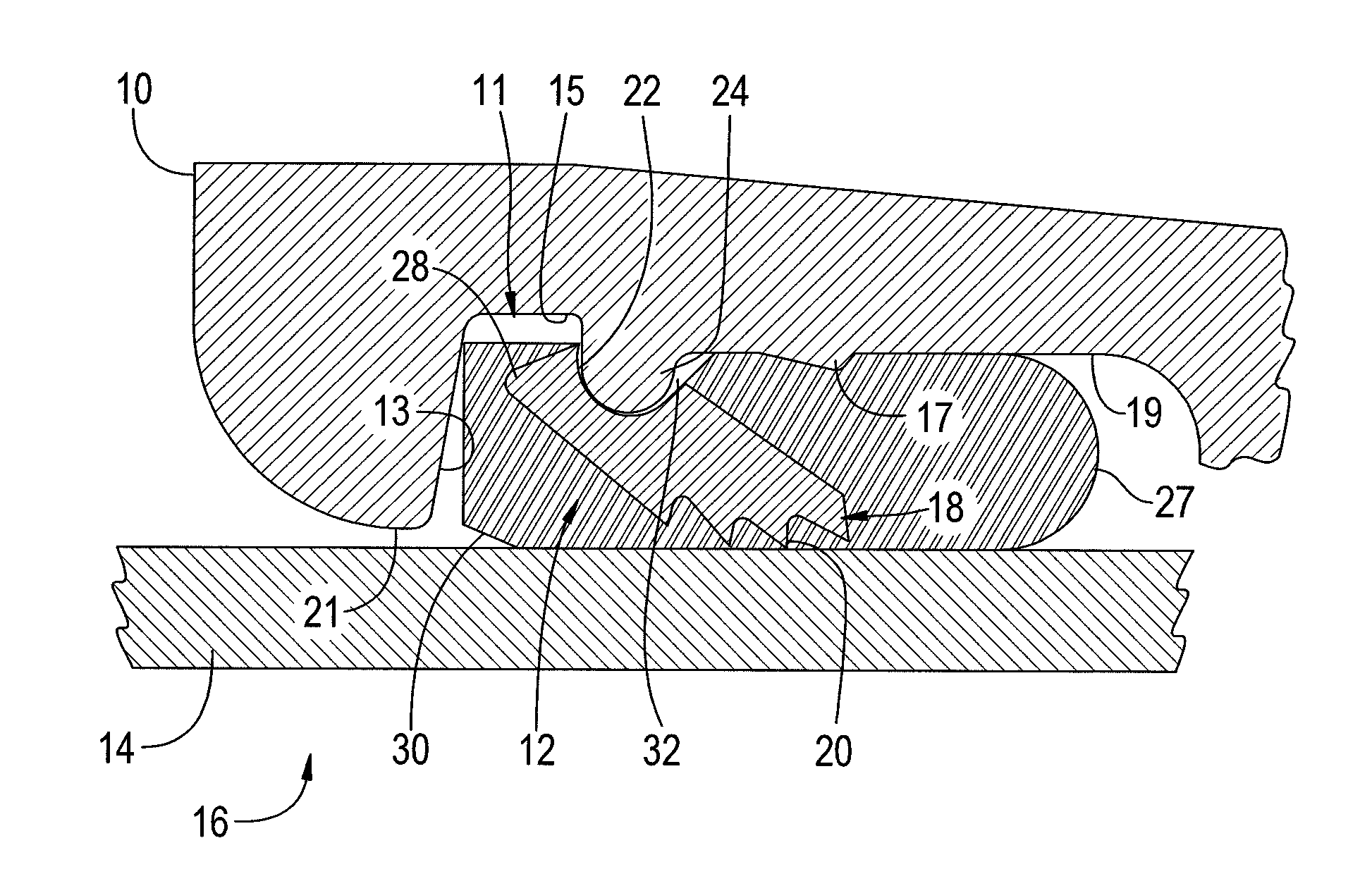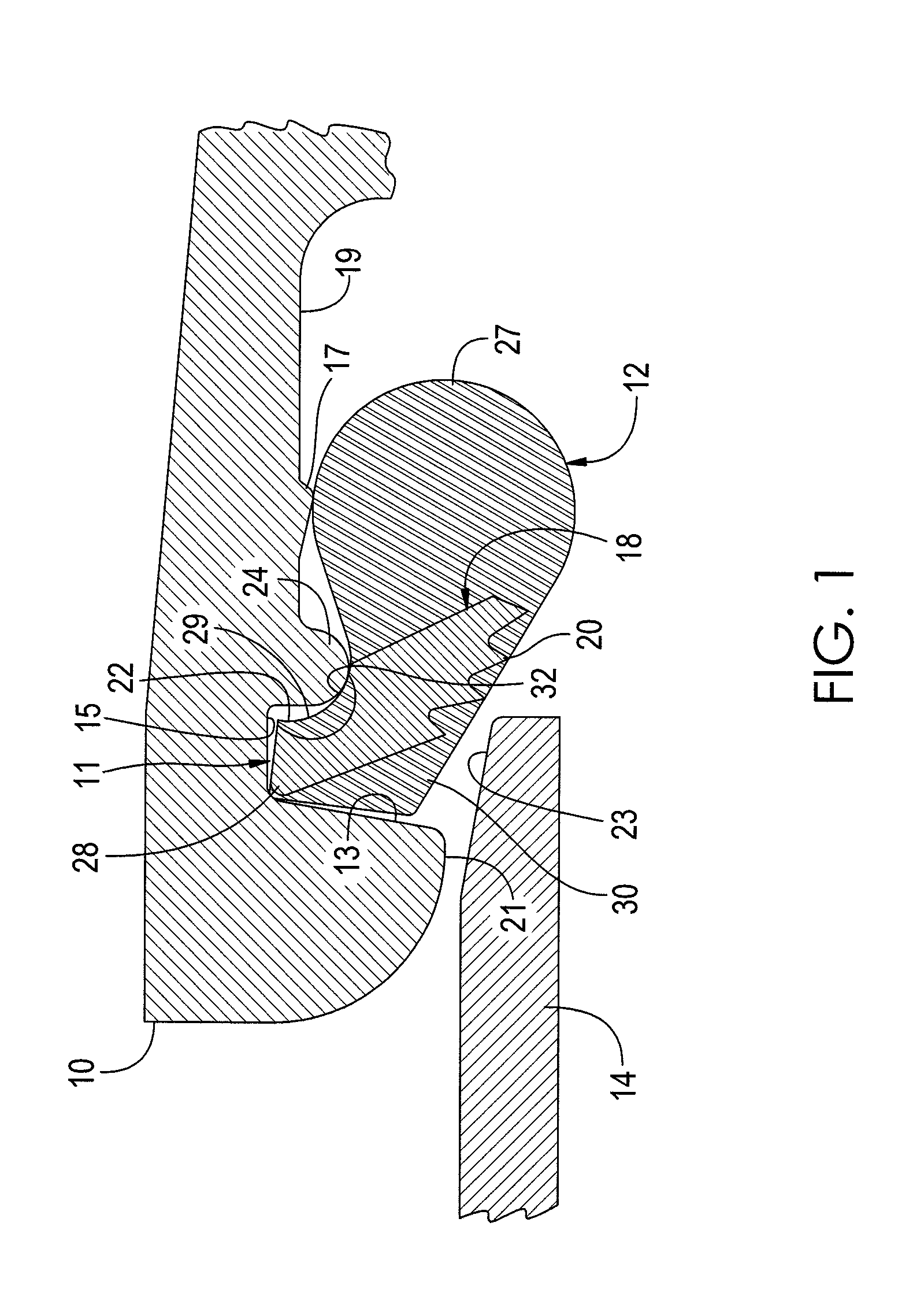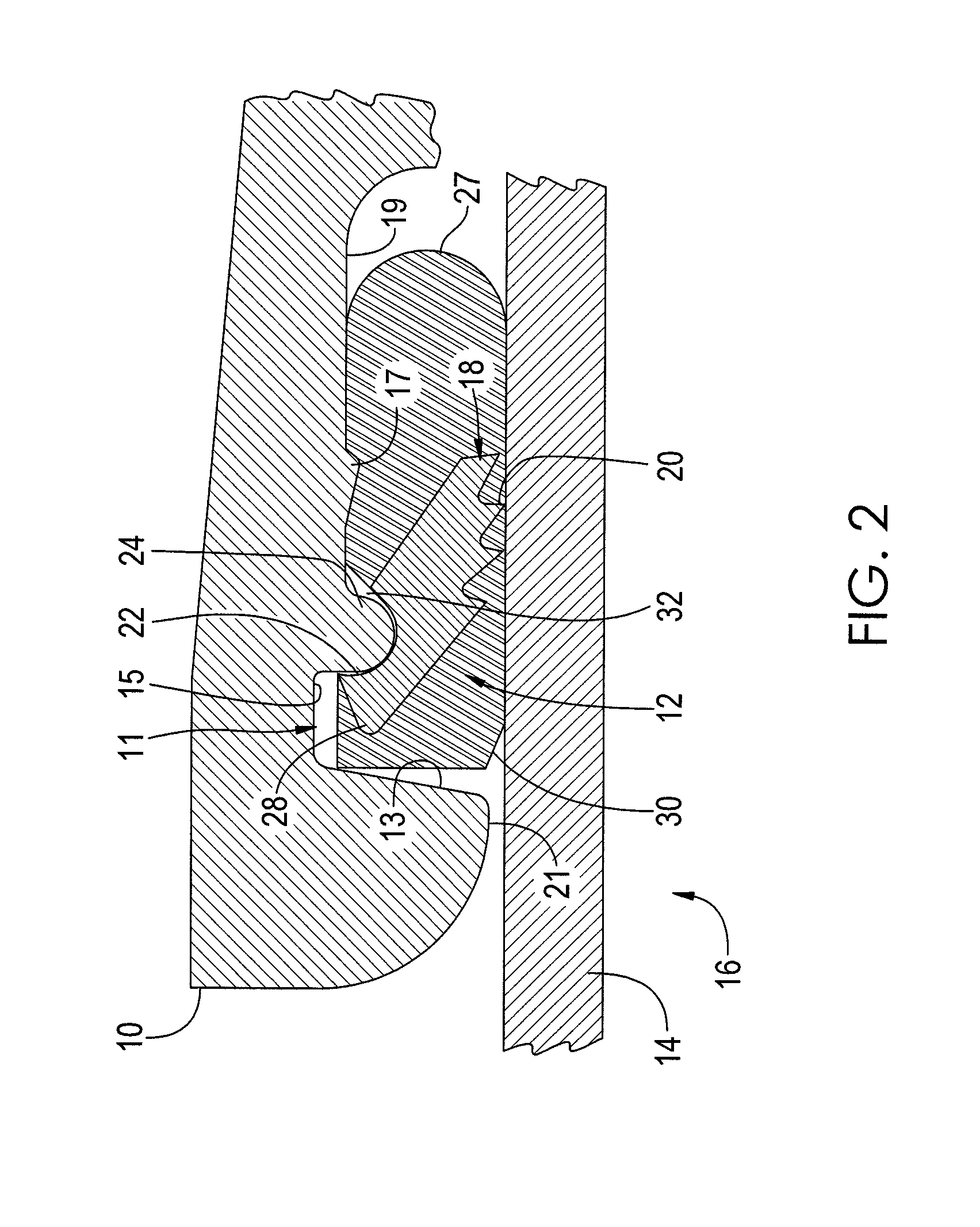Pipe joint gasket and method of using same
a technology of pipe joints and gaskets, which is applied in the direction of metal-working equipment, metal-working equipment, manufacturing tools, etc., can solve the problems of spigot or bell end failure, fracture, and segmentation that digs too deeply into the spigot end, so as to reduce the likelihood of metal segments falling off and over-pressurizing the pipes
- Summary
- Abstract
- Description
- Claims
- Application Information
AI Technical Summary
Benefits of technology
Problems solved by technology
Method used
Image
Examples
Embodiment Construction
[0016]FIGS. 1 through 5 depict a fragmented cross-sectional view of a bell end 10 of one pipe using a gasket 12 of the present invention, a spigot end 14 of another pipe entering the pipe bell and the operation of gasket 12 upon the fluid pressurization and over-pressurization of a pipe joint 16 created between bell end 10 and spigot end 14. In particular, these figures illustrate the arrangement and operation of metal segments 18 in gasket 12 relative to bell end 10 and spigot end 14 during the formation, fluid pressurizing and fluid over-pressurization of joint 16. FIG. 5 is provided to show the circumferential arrangement and spacing of metal segments 18 throughout gasket 12.
[0017]Generally, gasket 12 is arranged for inhibiting leakage about joint 16 between the inside walls of bell end 10 and the outside wall of spigot end 14. More particularly, as illustrated in FIGS. 1 and 2, the inner surface of bell end 10 includes a retainer groove 11 bounded by a radially extending front w...
PUM
| Property | Measurement | Unit |
|---|---|---|
| radius | aaaaa | aaaaa |
| included angle | aaaaa | aaaaa |
| angle | aaaaa | aaaaa |
Abstract
Description
Claims
Application Information
 Login to View More
Login to View More - R&D
- Intellectual Property
- Life Sciences
- Materials
- Tech Scout
- Unparalleled Data Quality
- Higher Quality Content
- 60% Fewer Hallucinations
Browse by: Latest US Patents, China's latest patents, Technical Efficacy Thesaurus, Application Domain, Technology Topic, Popular Technical Reports.
© 2025 PatSnap. All rights reserved.Legal|Privacy policy|Modern Slavery Act Transparency Statement|Sitemap|About US| Contact US: help@patsnap.com



